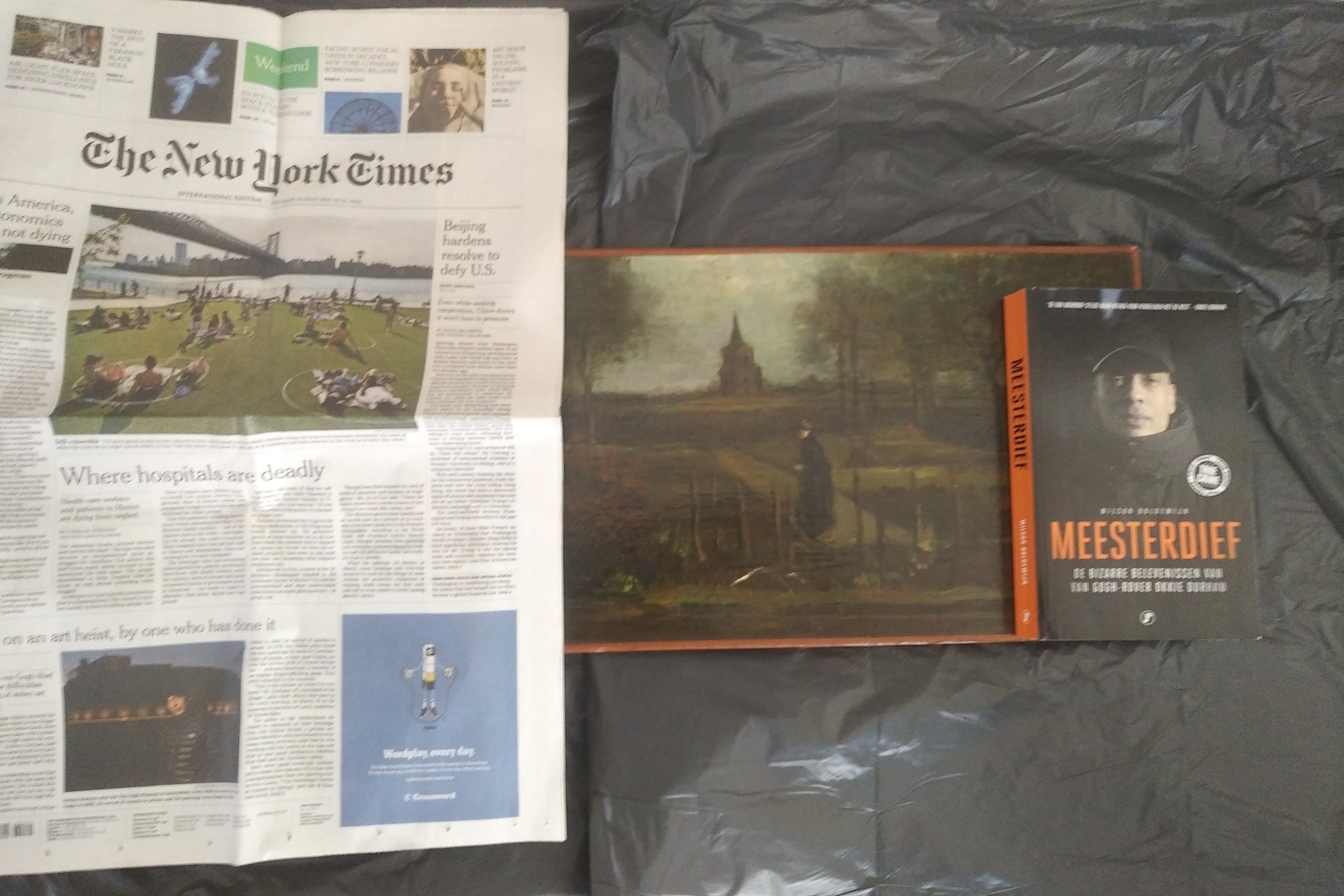
An incredible photograph of a missing Van Gogh painting that was stolen from a Dutch museum in March has been discovered circulating in the criminal underworld. The hostage-style picture presents the painting alongside a copy of the May 30 edition of the New York Times and a biography of a master art thief.
The Dutch art sleuth Arthur Brand, who has helped uncover valuable stolen artworks including a Picasso portrait and a pair of medieval stone reliefs, shared the astonishing photograph on his Twitter account. The artwork has been missing since it was stolen from Laren three months ago, but Brand has been on the case, taking it as a “personal insult” that the theft occurred on his home turf.
“This is good news,” Brand tells Artnet News of the image. “Sometimes criminals get nervous when they can’t immediately sell a work or they think police are on their tail and they destroy it.”
Brand leaned on his network to get his hands on the photograph, which he says is going around mafia circles. Unlike in a real hostage situation, Brand says, it is unlikely that the thief is holding up the painting for ransom, and is more likely circulating the image because he or she is trying to find a buyer. The theft has the hallmarks of an “absolutely professional” operation, according to Brand, particularly since the thief knew to include an image of the back of the painting, which often contains information that only the owners would know and rules out the possibility that the work could be a forgery.
Another strange clue in the picture: a copy of Meesterdief (Masterthief), the 2018 Dutch-language biography of Octave Durham, an art thief who went to prison for stealing two Van Goghs from the Van Gogh Museum in 2002. Brand says that this gives credence to his theory that the theft from the Singer-Laren museum was a copycat of Durham’s infamous heist, which was a similar smash-and grab situation. The Parsonage Garden at Nuenen in Spring (1884) was on loan from the Groninger Museum when it was taken under cover of darkness.
Vincent van Gogh, The Parsonage Garden at Nuenen in Spring (1884). ©Groninger Museum.
Durham, who has been released from prison, is not a suspect. Brand says he verified that the ex-con has the “perfect alibi,” having been in the hospital at the time of the crime. For his part, Durham is not flattered by the comparison, telling the New York Times last month that the Laren theft was amateurish.
Brand says that high-profile stolen paintings like the Van Gogh are hard to sell on the black market, and that the small canvas would only fetch a fraction of its market worth. Its whereabouts are more likely to be used as a bargaining chip with authorities to negotiate a more lenient sentence, as happened with other Van Gogh thefts in the Netherlands in the 1990s and in 2002 (Durham’s heist), when the eventual owners, an Italian drug lord and a mafia boss, used them to make a deal with law enforcement.
Brand is continuing to investigate the theft independently, but he says he is working closely with Dutch authorities to share any pertinent information that would lead to the recovery of the painting.